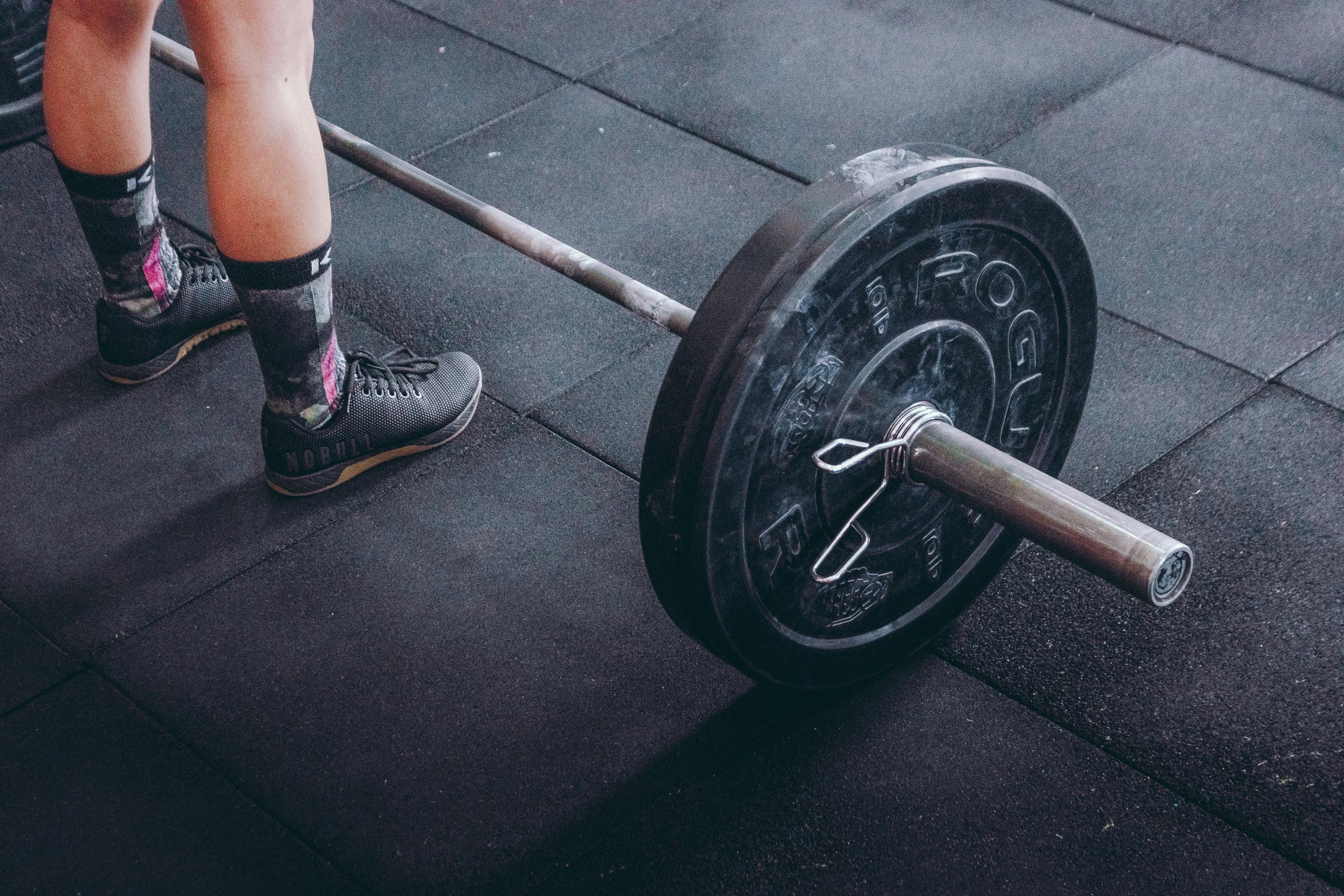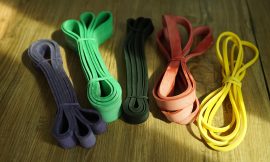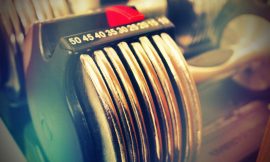You’ve got a garage. Maybe it’s got some junk in it, maybe it’s half-empty. Either way, you’re thinking about turning it into a home gym—but you don’t want to drop five grand on equipment you’ll use for three weeks before life gets busy.
Here’s the thing: you don’t need to. A fully functional garage gym that actually gets used is way cheaper than you think. The trick is not buying random stuff just because it looks cool. You need to be intentional, start small, and buy things that actually solve your problem.
Let me walk you through how to do it.
Why Your Garage is Perfect for a Gym
Your apartment’s living room? Terrible gym. Your garage? Perfect. You’ve got space to move around, you can drop weight without worrying about the floor, nobody cares if it’s loud, and you’re not giving up your entire living situation to fitness equipment.
The downside? It’s way too easy to buy things you don’t need. People get excited, buy a barbell one week, a bench the next, then some fancy cable machine they saw on Instagram. Suddenly they’ve spent $2,000 and half their garage on equipment they barely touch.
We’re not doing that. We’re building smart.
How Much Space Do You Actually Need?
Here’s the thing—you don’t need a huge garage. Most people think “garage gym” and imagine some massive workshop. You don’t.
For a basic setup with dumbbells, a bench, and a barbell, you need around 150-200 square feet. That’s roughly a 10×15 or 12×17 space. If you’ve got a one-car garage, you’ve got plenty. Two-car garage? You’re golden.
If your garage is smaller (under 150 sq ft), you can still make it work. You just need to be strategic about layout and storage. Mount your pull-up bar on the wall, store dumbbells on a rack instead of spread out, keep plates standing upright against the wall instead of flat on the floor.
The real constraint isn’t total square footage—it’s how much usable workout space you actually need. You need enough room to lie on your bench, move around to do dumbbell work, and have space for a barbell. That’s honestly only about 80-100 square feet for the actual workout. The rest is storage.
Pro tip: Measure your garage before you buy equipment. Mark out where your bench will go, where you’ll put the barbell, where you’ll do dumbbell work. Make sure you have clear paths to walk and enough ceiling height to do overhead presses without hitting anything.
Start With a Budget in Mind
Before you buy anything, decide what you’re actually willing to spend. Not a vague “under $1,000” but an actual number.
If you’ve got $300-$500, you can build a basic strength training setup. Add another $200-$500, and you’ve got options for cardio and more variety. Anything over $1,000 and you’re getting into “nice to have” territory—not necessary territory.
Most people get the best value in the $500-$1,000 range. Enough for a solid foundation, not so much that you’re wasting money on stuff you’ll never use.
What Actually Matters in a Garage Gym
You need five things. Not ten. Not fifteen. Five.
1. Dumbbells (Around $150-$300)
Start here. This is your main lift. Adjustable dumbbells are better because you’re not trying to store ten pairs of weights in a garage that’s already cramped.
Look for something that goes from 5 to 40 or 50 pounds. You want to be able to do pressing, rowing, and single-arm work without running out of weight options. The adjustment mechanism matters—if it’s clunky, you’ll hate using it.
Don’t overspend on brand name. Flybird and Yes4All get the job done. They’re not Bowflex smooth, but they work, and people actually use them without complaining. Check the reviews to see what real users say.
Pro tip: If adjustable dumbbells are stretching your budget, just buy three fixed dumbbells instead—maybe a 20, 35, and 50 pounder. Costs less, takes up a tiny bit more space, still covers your main lifts.
2. A Barbell and Some Plates (Around $100-$150)
A basic Olympic barbell is 45 pounds and costs $40-$60. Add some standard weight plates—not the fancy bumper plates, just regular iron—and you’ve got everything you need for squats, deadlifts, and presses.
Start with just enough weight to do what you need right now. You don’t need to buy 200 pounds of plates upfront. Add more when you get stronger.
Here’s the real money move: buy used. Go on Facebook Marketplace or Craigslist. You’ll find people who bought home gyms, got excited for two weeks, and now just want them gone. They’ll sell plates for half the new price. Sometimes less.
Pro tip: Standard plates are fine on a concrete garage floor. You don’t need bumper plates unless you’re planning to drop weight from overhead regularly. Save that money for later.
3. A Weight Bench ($50-$150)
You need somewhere to sit for rows, somewhere to lay for pressing, somewhere to set dumbbells down. A simple, adjustable weight bench does all that.
Don’t get fancy. You need sturdy, adjustable, and that’s it. An adjustable bench that goes from flat to incline is ideal because it opens up a few more exercise angles, but even a basic flat bench works fine.
And honestly, used benches are everywhere. People impulse-buy them, they take up space, and they sell them cheap. Test the stability, make sure nothing’s broken, and buy it.
Pro tip: Make sure the bench is actually stable before you commit. Wobbly benches are dangerous and annoying.
4. A Pull-Up Bar (Around $20-$40)
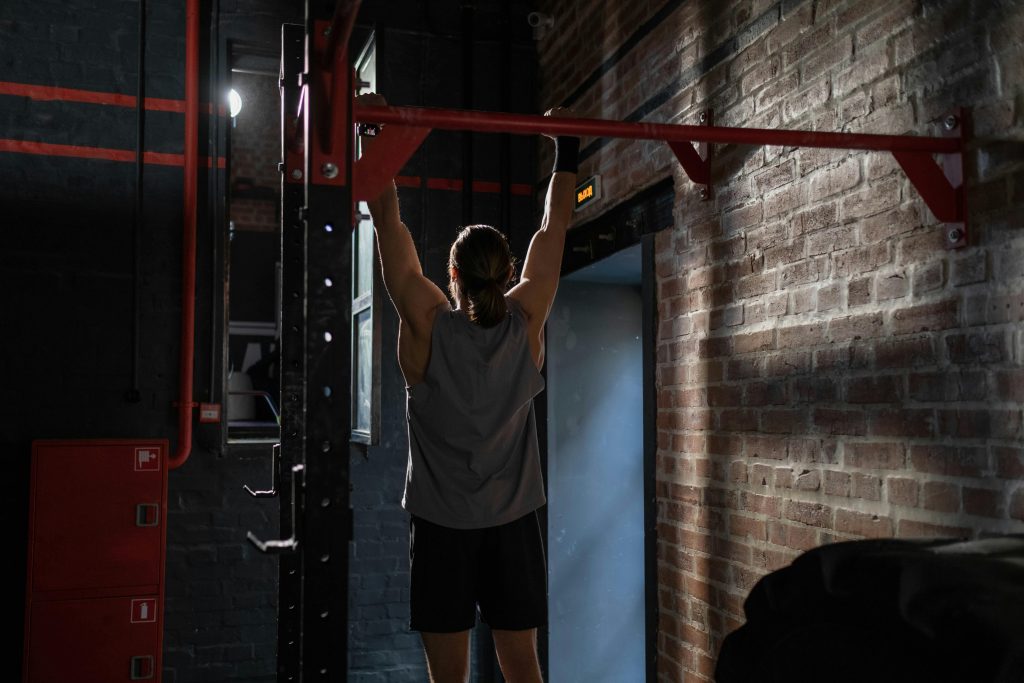
Mount this somewhere in your garage and you’ve just unlocked pull-ups, chin-ups, and hanging leg raises. That’s upper body and core work without needing fancy equipment.
A doorway bar works, but in a garage, a wall-mounted bar is better. It doesn’t wobble, and you can actually put full effort into it. If your garage has exposed beams or joists, mount right to those. If it’s drywall, use proper heavy-duty anchors or get someone who knows what they’re doing to install it.
Pro tip: Test it before you start hanging from it. Make sure it’s actually secure.
5. Resistance Bands (Around $20-$50)
These fill the gaps. They’re great for warm-ups, stretching, adding extra resistance to bodyweight moves, and fixing weak points in your lifts.
Get a set with handles because they’re way more versatile than just loops. A door anchor opens up exercises you can’t normally do in a garage.
Pro tip: Store them inside, away from sun. Bands last forever if you take care of them.
That’s it. Five things. Everything else is optional.
Should You Add a Squat Rack?
A squat rack or power cage costs $150-$400 and lets you safely squat and bench press with a barbell. If you’re planning to lift heavy with a barbell, it’s worth considering.
But here’s the honest answer: do you need it right away? Probably not. You can squat with dumbbells. You can bench press on your adjustable bench. A squat rack is nice, but it’s not essential for your first garage gym.
Add it later when you’ve actually built a routine and know you’ll use it. No point buying it now if you’re not sure.
Cardio Isn’t a Priority
This is important: you don’t need cardio equipment in your garage gym.
Run outside. Jump rope if it’s cold. Do bodyweight cardio circuits in there—burpees, mountain climbers, high knees. Or just skip cardio equipment entirely. Most people buy treadmills or bikes, use them twice, and then they become expensive storage.
If you really want something, a used stationary bike on Facebook Marketplace is $100-$200 and people sell them constantly. But honestly? You probably don’t need it.
Pro tip: If you have downstairs neighbors (or even if you don’t), jumping on concrete gets loud fast. Be aware of that before committing to jump rope.
Flooring Makes a Difference
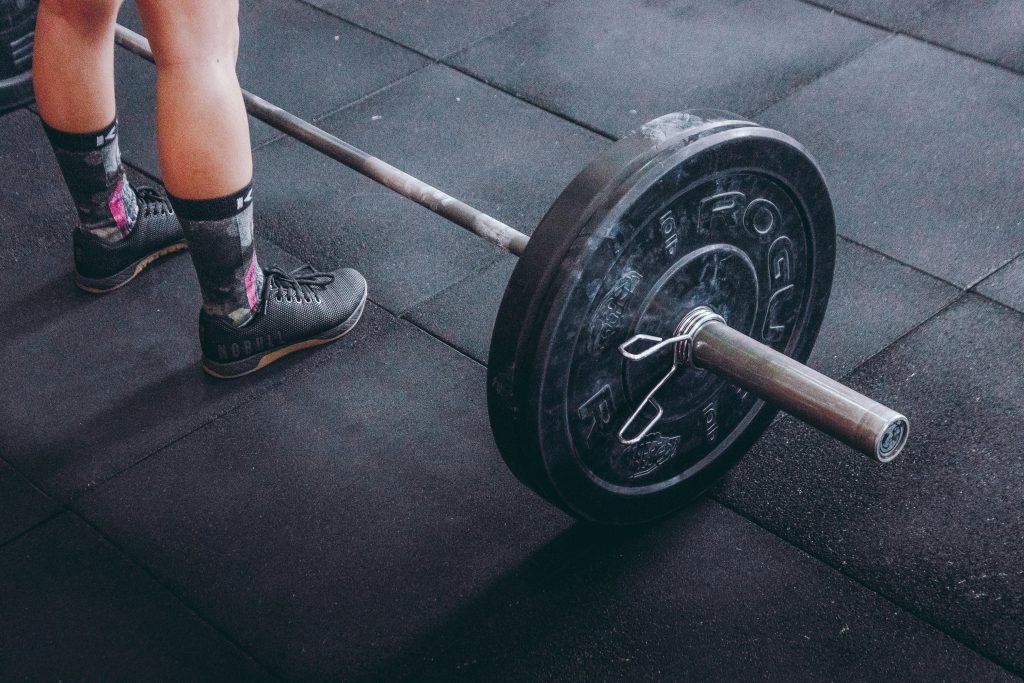
Concrete garage floors are rough on equipment and hard on your joints. You have options.
Cheapest: just use the concrete floor. It’s free, but equipment wears faster and it’s not comfortable for barefoot work.
Budget-friendly: grab some rubber mats ($20-$50). They protect your floor and equipment, reduce noise a bit, and you just lay them down. Done.
Better: interlocking rubber tiles ($50-$150). More professional looking, more comfortable, lasts longer. Still easy to install.
You don’t need to cover the whole garage. Just the workout area. A 6×8 space is plenty.
Pro tip: You can always upgrade your floor later. Start with mats, add tiles if you end up using the space regularly.
Your Real Total Cost
Here’s what you’re actually spending if you’re smart about it:
- Adjustable dumbbells: $150-$250
- Barbell and used plates: $80-$150 (buying used saves serious money)
- Weight bench: $60-$100
- Pull-up bar: $25-$40
- Resistance bands: $20-$30
- Rubber mats: $30-$50
Total: Around $365-$620 if you buy used plates and don’t get fancy.
Even if you add a squat rack ($150-$300), you’re looking at under $1,000 for a complete, functional setup.
That’s one gym membership per year. And you own it forever.
The Real Money Move: Buy Used
This can’t be overstated. Facebook Marketplace is full of barely-used home gym equipment. People buy it for New Year’s resolutions, life gets busy, and they just want it gone. You can get equipment for 50% off or more.
Is it perfect condition? Maybe not. But it works, and that’s what matters.
Spend your money on things that have to be new (resistance bands, mats). Buy everything else used.
Build Over Time, Not All At Once
You don’t need everything day one. Get dumbbells and a bench. Use them for two weeks. Then add a pull-up bar and bands. Give that a month. Then think about a barbell if you want it.
Spreading out your purchases also means you’re not blowing your budget in one week. You’re being intentional. You’re seeing what you actually use before buying more.
Plus, this gives you time to scope out deals on Facebook Marketplace instead of panic-buying whatever’s on Amazon.
What Your Garage Gym Actually Looks Like
You work out with dumbbells. You do pull-ups. You do some barbell lifts. You stretch on your mat. You hit your back with resistance bands. You do bodyweight circuits.
That’s a complete workout. That’s all you need.
Will you miss the cable machine at the commercial gym? Not really. Will you miss the leg press? You can do leg work with dumbbells or a barbell. The fancy stuff is nice, but it’s not necessary.
Most people at fancy gyms use like five machines anyway. The rest just collect dust.
Is It Worth It?
Yeah. Here’s the math: a $500 garage gym that you use three times a week for a year costs less than two months of a gym membership. And you own it forever. No monthly fees. It’s there when you want it.
The only requirement? You actually have to use it. A garage gym that sits unused is just clutter. But if you’re someone who’ll work out at home, it’s the best money you can spend on fitness.
Start with dumbbells and a bench. That’s your foundation. Everything else is bonus. Buy used when you can. Don’t rush. And focus on using what you have before adding more.
If you’re building a minimal setup, check out our guide on minimal home gym setups to see if that approach works better. And if you’re still deciding between equipment options, we’ve got a full breakdown on resistance bands vs. dumbbells.


